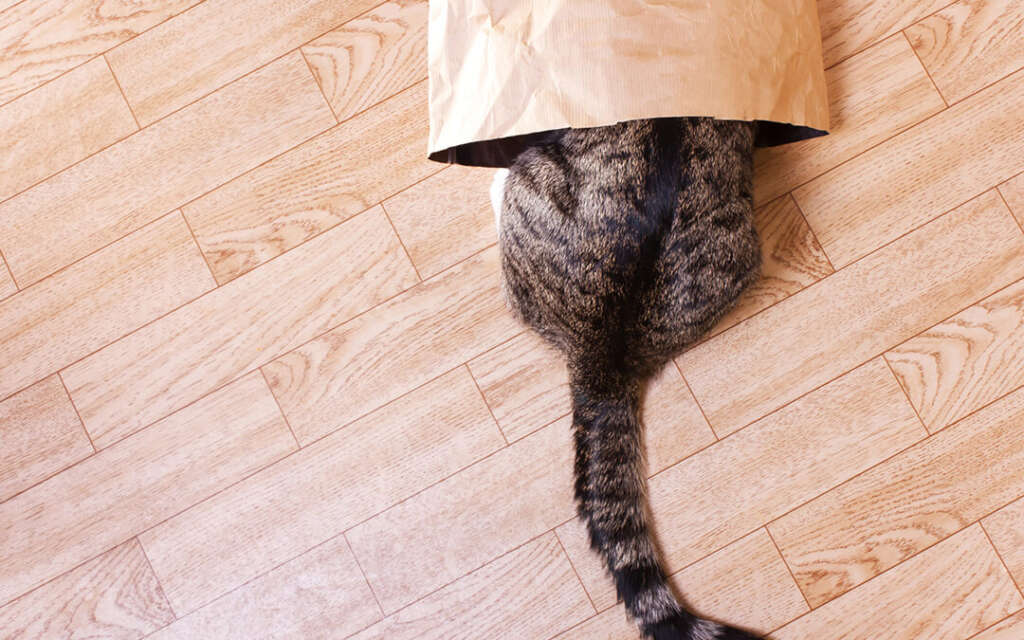Cats are known for their mysterious and independent nature, but their body language speaks volumes. One of the key ways your feline friend communicates is through their tail. Understanding cat tail meanings can help you better interpret your cat’s emotions, desires, and moods, improving your bond with them. From subtle flicks to dramatic poofs, your cat’s tail is constantly sending signals that reflect their inner emotional state.
Understanding Cat Tail Language


What does it mean when your cat wags its tail? And what can your cat’s tail movements tell you? Tail wagging is a cat body language that can help you understand their mood. Let’s find out more about what to look for.
The Upright Tail: A Sign of Confidence and Friendliness
An upright tail is often seen as a sign of a happy and confident cat. When your cat greets you with their entire tail standing straight up, it’s an affiliative behavior that indicates a friendly greeting. This tail position is commonly seen in social cats who feel secure and comfortable with their human companions.
The Curved or Question Mark Tail: Playfulness and Curiosity
A cat with a question mark-shaped tail is in a playful mood. This tail position suggests that your feline friend is feeling energetic and ready to engage. A cat with its tail curled like a question mark may be exploring new environments or interacting with their favorite toys.
Tip: Keep an eye out for a question mark tail when your cat invites you to play!
The Twitching Tail: Excitement, Focus, or Irritation
Tail twitching is one of those cat tail signals that can have a variety of meanings depending on the context. When a cat is focused on something, such as a toy or prey, they may exhibit quick, subtle twitching, reflecting their heightened attention. However, if the tail begins to thrash or twitch more rapidly, it can also signal mild irritation or annoyance.
Understanding these subtle shifts in body language is crucial to prevent overstimulation or potential aggression.
The Puffed-Up Tail: Fear or Aggression
A puffed-up tail is a classic indicator that your cat feels frightened or threatened. This dramatic display makes your cat appear larger to ward off potential threats. A frightened cat may also arch its back and puff out its fur in response to a perceived danger.
Feline Care Note: If your cat frequently exhibits signs of fear or aggression, contact a vet for advice on behavior management.
The Low or Tucked Tail: Submission or Fear
A cat with a lowered or tucked tail is likely feeling anxious or submissive. A lowered tail position is often seen in cats during stressful situations, such as meeting unfamiliar people or animals. Cats that are unsure of their surroundings or feel threatened may also display this behavior.
The Wrapped Tail: Contentment and Affection
A cat’s tail wrapped around your leg or other feline friends is a clear sign of affection and security. This tail position is associated with a relaxed, content cat. Your feline companion may use this behavior as a way of bonding or showing trust.
Did you know? Tail wrapping is a form of affiliative behavior, expressing their attachment.
The Swishing or Lashing Tail: Agitation or Anger
A rapidly swishing or lashing tail is a clear sign of agitation. If your cat is flicking its tail back and forth aggressively, it’s best to give them space. This behavior is often seen just before a cat reacts with claws or bites, especially if they’re feeling angry or overstimulated.
Tail Held Straight Down: Defensiveness or Discomfort
If your cat holds its tail straight down, it can be a sign of defensiveness, especially in confrontational situations. This tail position can also indicate that your cat is feeling uncomfortable or threatened. Pay attention to other signs, like flattened ears or a crouched body posture, to gauge their emotional state.
Tail Quivers: Friendly Greeting or Marking Territory
If your cat’s tail is held upright and quivering slightly, they are likely greeting you in a friendly manner. Some cats also exhibit this behavior when marking territory, particularly if they are rubbing against objects while quivering their tail.
Pro Tip: Notice how your cat uses tail quivers to signal affection when greeting you or other cats.
Tail Movements During Play: Excitement and Focus
Cats often exhibit a range of tail movements during play, from quick flicks to slow, deliberate swishes. These movements reflect their focus and excitement, especially when they’re preparing to pounce on a toy or engage in predatory behavior.
Recognizing Tail Signals in Multi-Cat Households
In households with multiple cats, understanding cat tail language is essential for managing relationships between feline companions. Cats use tail language to communicate with one another, often displaying affiliative behaviors or signals of dominance.
Tail Language and Body Posture: Reading the Whole Picture


While tail movements are a critical aspect of feline body language, it’s essential to consider the entire body when interpreting your cat’s emotions. For example, a puffed tail combined with flattened ears and wide eyes is a strong indicator of fear, while an upright tail with a relaxed body posture reflects confidence.
By learning to decode cat tail meanings, you can gain valuable insights into your cat’s emotional state and improve your communication with your feline friend. Pay attention to their tail signals alongside other body language cues like ear position and posture. Whether your cat is feeling playful, frightened, or content, their tail movements will give you a clear indication of their emotional state.By making an effort to read your cat’s tail language, you’ll be more in tune with their emotions, leading to a happier and healthier relationship. If you have concerns about your cat’s behavior, our experts at Modern Vet are here to help with a variety of pet care services, from behavior consultations to routine veterinary care.



